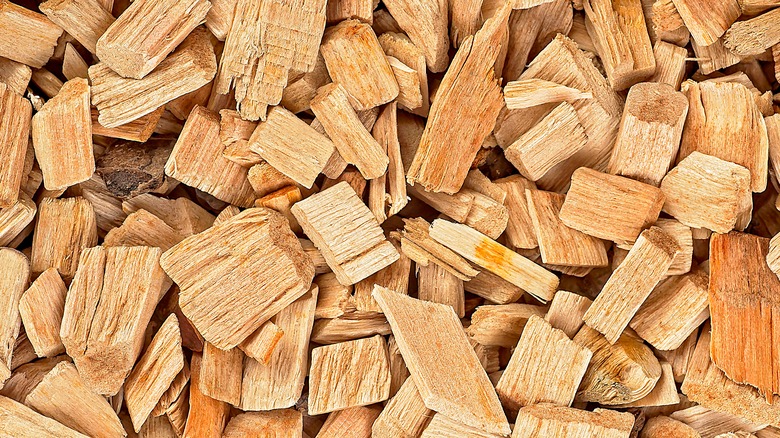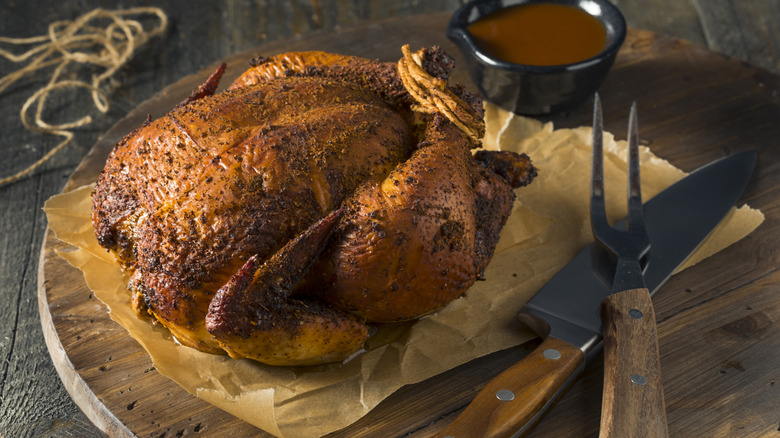When the pull of barbecue takes hold, many naturally think of hearty meats like pork shoulder, spare ribs, and brisket that have been quite nearly melted in the hazy, mild heat of the smoker. But delicate cuts deserve their turn in the smoke, and quite possibly the king of the smoked white meats is chicken. Beyond the sultry flavor it delivers, smoked chicken is relatively easy to prepare for all you nascent grill masters out there. While there are many variables to consider when making smoked chicken, one that consistently comes up is what type of wood is best suited to the task.
Obviously, when compared to other barbecue fare, chicken is a milder meat. As such, it is much more of a canvas for the influence of marinades, rubs, and smoke. Wood for barbecue can range from robust hickory to Texas favorite mesquite. Each type has unique characteristics that make them prized by pit masters for various uses. Chicken, mild as it is, can easily be overshadowed by a cloud of smoke from some of the stronger flavored woods; if you’re aiming for balance, look elsewhere.
Rather, turn to fruit woods for smoked chicken that shines in more ways than one. Apple and cherry are the most common, and each ably smokes chicken and other poultry without leaving the meat tasting like it fell right in the fire. With all woods, though, it’s important to understand the properties of each.
Choose your fruit

They say the apple doesn’t fall far from the tree. Neither does the wood. Carrying in its gentle smoke subtle undertones of the fruit, apple wood is a perfect choice for mild items you wish to smoke, from freshwater fish to whole chickens. Just as apples go well with chicken, so too does the wood impart a suggestion of sweetness that accents the savory notes of the bird. Just remember not to use a heavy hand; you don’t want to let the meat linger too long in the aura of the burning wood as it can begin to take on off-putting flavors.
Cherries are deeper and darker than apples, so it makes sense that cherry wood is a touch more assertive than apple wood. That said, it is still a perfectly acceptable, even desirable wood for smoking chicken, just one that chefs should be mindful of when employing. Cherry wood’s relative boldness is an asset that means it works well with meats that are more robust, such as pork, lamb, or game fowl like duck and goose. If you’d like to use it with chicken, search for a bird that is a bit more robust in flavor, if available, or simply use a bit less cherry wood for a conventional store-bough bird. Another option would be to only use cherry wood to smoke the more flavorful bits of the chicken. Legs and thighs have the right amount of fat and well-worked dark meat to handle cherry’s depth.







